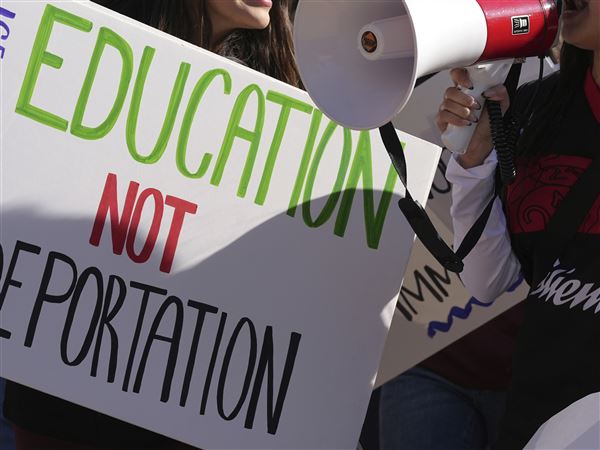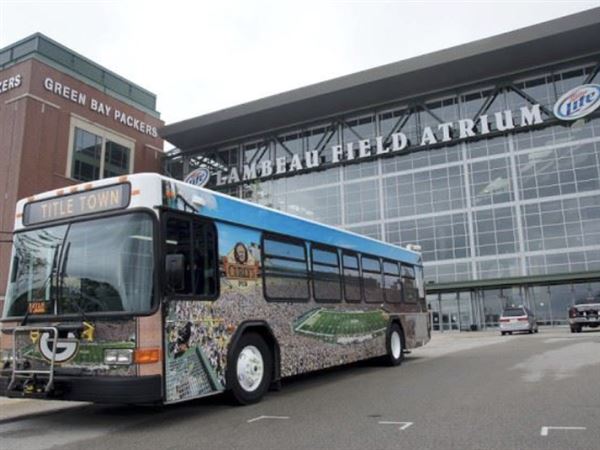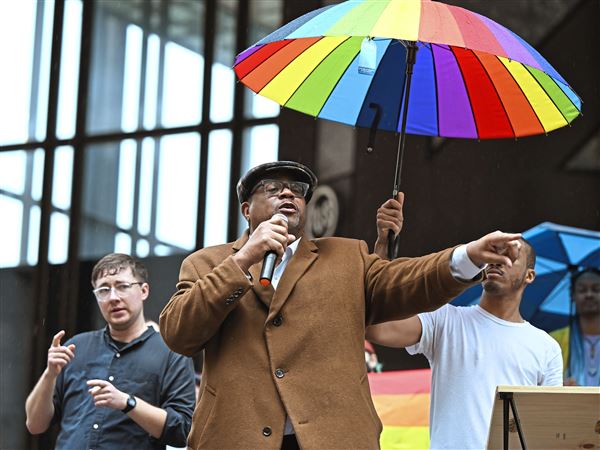In a political era defined by ever deepening tribalism and rigid partisan allegiance, Allegheny County voters delivered a nuanced verdict in historic elections last week that set the stage for even more consequential contests to come.
At first glance, the results in races for county executive and district attorney appear to follow a pattern familiar to generations of political observers: the deep blue island of the county’s urban core surrounded by a sea of Republican red in the outer suburbs.
Delve into the numbers, though, and another picture emerges — one of a thoroughly engaged electorate willing to set aside party loyalty to stay true to deeply held beliefs.
From Forward to Harrison and Findlay to Monroeville, thousands of voters in hundreds of precincts split their tickets, picking Democrats for some key offices and Republicans for others. As people flocked to the polls in unusually high numbers for an off-year election, several voters in this solidly Democratic county told the Post-Gazette they were voting for a GOP candidate for the first time — though it was often only for one Republican on ballots that were otherwise solidly blue.
The mixed results in Allegheny County contrasted with high-profile Democratic victories in solidly Republican areas across the country. Kentucky voters re-elected their Democratic governor just two years after Donald Trump won the state by 26 points. Ohio voters broadly supported a state constitutional amendment enshrining the right to abortion only 12 months after electing a stridently anti-abortion Republican to the U.S. Senate. In Virginia, Democrats bucked a historical trend and captured full control of the state legislature while their party holds the White House.
Even in Pennsylvania, Democratic gains in Republican enclaves in the state’s conservative middle counties led to a sweeping victory for state Supreme Court Justice-Elect Dan McCaffery over his GOP rival, as well as down-ballot victories in places that should have been safely Republican. Allegheny County GOP chairman Sam DeMarco called it “one of the party’s worst statewide defeats in decades.”
The Democratic victories came at a precarious moment for the party. A series of recent polls showed President Joe Biden trailing Mr. Trump in key swing states, including Pennsylvania. At the same time, the party must defend 23 of the 33 U.S. Senate seats up next year. Three of those — more than enough to flip control of the chamber to Republicans — are in states Mr. Trump won in 2016 and 2020. Another is in Pennsylvania, a state both Mr. Biden and Mr. Trump have won.
An election night that could’ve induced outright panic among the party faithful turned out to be a reset.
“Despite all the bed-wetting, Democrats are in array,” Sen. John Fettterman, D-Pa., said in a statement the morning after the election. “We went hard and won, and a year from now, we’re going to do the same to deliver PA for Joe Biden and re-elect Bob Casey.”
Allegheny County voters will be key to those races — and last week’s results showed they’re paying attention to more than just a candidate’s party.
In 40% of precincts, both a Democrat and a Republican won at least one top-tier race. That includes nearly 50 voting districts within city limits, and dozens more in some of the county’s most Republican areas.
The stage for those split results was set just over four years earlier, on Oct. 31, 2019, when then-Gov. Tom Wolf signed a historic, bipartisan overhaul of Pennsylvania’s election law. Known as Act 77, the legislation was a hard-won compromise between the two parties.
Democrats won the legalization of no-excuse absentee and mail voting — something they still use in far larger numbers than Republicans to lock in votes for their candidates as early as possible, allowing them to target their election-day voter turnout operations more precisely.
In exchange, Republicans won the elimination of the straight-party option on ballots across the state. No longer would Democratic candidates automatically benefit from huge numbers of voters in the state’s most populous areas simply checking one box and walking out of their polling place.
Both changes altered the state’s political landscape, but the latter was on prominent display Tuesday, on thousands of split tickets cast in Allegheny County. The results in this most recent election, spread across geographic and demographic boundaries, laid bare divides within both parties that campaigns are likely to exploit next year in a high-stakes battle for control of the federal government.
Chief among them: abortion rights.
Few issues pose as dire a threat to GOP candidates as the surge in support for candidates who promise to fight restrictions on abortion. County Executive-elect Sara Innamorato, a progressive Democrat, strove to capitalize on that by making abortion a central issue in her campaign — even though the executive has little if any say in whether abortions are legal in Allegheny County.
While she won a narrow, two-point victory over Republican Joe Rockey, the race where abortion rights were undeniably central — the state Supreme Court contest — saw Judge McCaffery trounce his GOP opponent by 25 points.
Democrats are already working to remind voters that the likely Republican nominee for Pennsylvania’s U.S. Senate seat next year, David McCormick, supported overturning Roe v. Wade during his unsuccessful 2022 primary.
“This is an extremely divisive issue,” said Joseph DiSarro, a political science professor at Washington & Jefferson College and a local GOP committee member. “We can just look across the border to Ohio and see that in a deep red state, there’s [now] a constitutional amendment protecting reproductive rights.”
Voters who chose both Mr. Rockey and Judge McCaffery on the same ballot were far and away the most common ticket-splitters. Those two candidates from opposite parties won or tied in 423 precincts together.
At the same time, Ms. Innamorato and District Attorney Steven A. Zappala Jr., a Democrat who ran as the Republican nominee, pulled off the same feat in dozens of places. Despite Ms. Innamorato being her party’s most progressive nominee for county executive ever, and him being a longtime Democrat who’s so conservative the GOP establishment lined up behind him, they won or tied in 111 of the same precincts.
For a region firmly within the fuzzy borderland between the frenetic east coast and the staid midwest, some found the mixed results unsurprising.
“Pittsburgh is just, culturally, a more conservative part of the state,” said Christopher Nicholas, a Harrisburg-based Republican strategist.
Politicians can take the results as “a learning experience” said Larry Ceisler, a Philadelphia-based public affairs consultant who has worked on Democratic campaigns and is from Washington, Pa. “Voters want people in a position like county executive to govern in a pragmatic, non ideological fashion.”
Just as abortion rights are likely to divide Republicans once again next year, the split between the Democratic Party’s traditional, moderate base and its energetic, rising progressive wing could complicate the campaigns nex year of establishment incumbents including Mr. Biden and Mr. Casey — particularly in crucial areas like Allegheny County and the rest of Western Pennsylvania.
By the time the 2024 election arrives, Ms. Innamorato will have had nearly a year at the helm of county government, during which her commitment to progressive governance — and the results it produces — will be put to the test.
“There's no mandate there,” Mr. DiSarro said. “There's no mandate for Zappala, there's no mandate for Innamorato. They're very close races.”
Mike Wereschagin: mwereschagin@post-gazette.com; Hallie Lauer: hlauer@post-gazette.com; Steve Bohnel: sbohnel@post-gazette.com
First Published: November 12, 2023, 10:30 a.m.
Updated: November 13, 2023, 5:20 p.m.
























